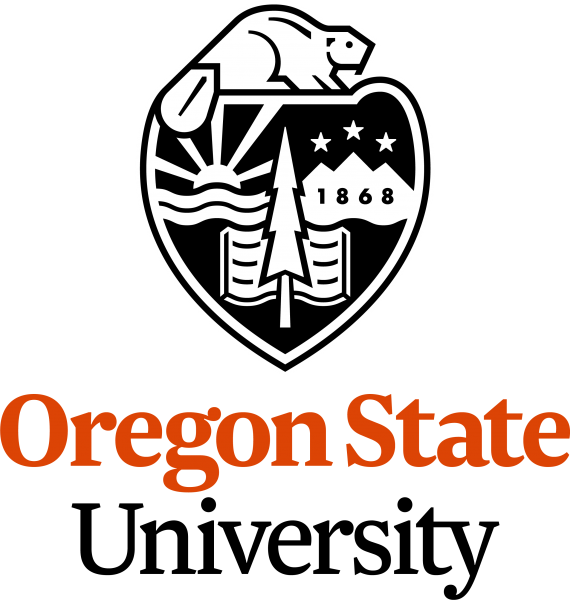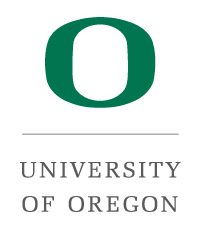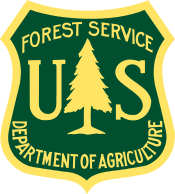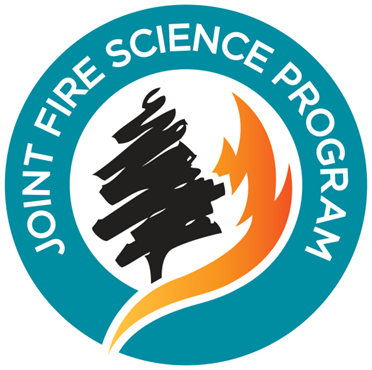InciWeb Articles & Incidents for Washington and Oregon
Range 12 Fire update 8-2 AM (Range 12 Fire Wildfire)
Range 12 Fire Update Fact Sheet August 2, 2016 – AM Contact: Fire Information Center: Temporary numbers are (541)670-0812 or (818)512-6906 Information Websites: Inciweb – http://inciweb.nwcg.gov/incident/4915 and Facebook Range 12 Fire Incident Management: Northwest Incident Management Team 8, Doug Johnson Incident Commander (IC), is managing the fire under a Delegation of Authority from the Spokane District Bureau of Land Management and the US Fish and Wildlife Service Pacific Region. Fire Size: 175,000 acres Percent Contained: 10% Structures Threatened: 250 single residences Closures: No closures at this time. Cause: Fire started July 30, 2016. The cause is under investigation Resources: Total personnel assigned 404; 1 -type 1 hand crew, 7 -type 2 hand crews, 2 camp crews, 3 helicopters, 34 engines, and 4 dozers. Air Operations: The temporary flight restriction (TFR) expanded slightly over the fire area with the center located 10 miles southeast of Yakima restricting public...
Range 12 Fire Update (Range 12 Fire Wildfire)
Range 12 Fire Update Fact Sheet August 1, 2016 – PM Contact: Fire Information Center: Temporary numbers are (541)670-0812 or (818)512-6906 Information Websites: Inciweb – http://inciweb.nwcg.gov/incident/4915 and Facebook Range 12 Fire Incident Management: Northwest Incident Management Team 8, Doug Johnson Incident Commander (IC), assumed management of the fire at 12:00 noon today. IC Johnson would like to thank the Multi-Agency Type 3 Team for the successful suppression efforts. Fire Size: 175,000 acres, perimeter of fire growth was minimal today. The acreage increased is the result of clearing smoke and a helicopter flying the perimeter with a GPS. Percent Contained: 10% Structures Threatened: 250 single residences Closures: No closures at this time. State route 24 was opened today to all traffic. Cause: Fire started July 30, 2016. The cause is under investigation Resources: Total personnel assigned 365; 1 -type 1 crew, 8 -type 2 crews, 2 camp crews, 3 helicopters, 25...
8.1.2016 Update (Olympic National Park Fires 2016 Wildfire)
Obstruction Point Road reopened to the public Monday morning. Olympic National Park remains OPEN, and the main visitor areas, including the visitor centers, information stations and campgrounds are not affected by this fire. There are no trail closures associated with the fires and all ranger programs and special events are still scheduled as normal. Overnight, a fixed wing aircraft with infrared-sensing capabilities flew over the fires and gathered information on the amount and locations of heat produced by each fire. Godkin Fire shows scattered heat along its east flank, with isolated pockets of heat within the fire perimeter. The Hayes Fire has scattered heat on its north flank with fingers of scattered heat on the west flank. Cox Valley Fire shows scattered heat within its perimeter. This information is consistent with other observations of fire behavior and smoke and further demonstrates the effects of cooler, moister weather. Cooler temperatures and increased humidity over the...
7.31.2016 Update (Olympic National Park Fires 2016 Wildfire)
Olympic National Park Fire Update Sunday, July 31, 2016 Saturday brought cooler weather and increased humidity which led to decreased fire behavior. Minimal fire growth was reported on all fires. The acreage increase of Godkin and Hayes fires compared to yesterday is due to more accurate mapping. Three fire engines are assigned to monitor the Cox Valley fire and helicopter operations and water drops may continue if needed. The Hayes fire is progressing slowly over the ridge into Lost Creek. The Godkin fire is showing minimal growth to the south and west, up slope. Firefighters continue to monitor the Godkin and Hayes fires, taking management actions, such as point protection, as necessary. The Ignar Creek fire is smoldering and creeping, showing minimal fire growth. Fire Management will continue reconnaissance flight over the fires as needed to aid in planning fire operations for the next several days. Fire behavior is predicted to decrease this weekend as the temperatures return...
7.30.2016 Update (Olympic National Park Fires 2016 Wildfire)
Olympic National Park Fire Update Saturday, July 30, 2016 Friday was a dynamic day, with warm weather contributing to increased active fire behavior. The Cox Valley fire was active in the morning with a smoke column visible from the Hurricane Ridge area and surrounding towns. Water drops from a helicopter effectively slowed fire spread to the south. Helicopter operations will continue today on the Cox Valley fire. The Hayes fire was active in the afternoon, slowly progressing over the ridge into Lost Creek. The Godkin fire grew approximately five acres yesterday. Firefighters continue to actively monitor the Godkin and Hayes fires, taking management actions, such as point protection, as necessary. A fourth fire was reported Friday afternoon. The Ignar Creek fire, located southeast of Pyrites Creek at the confluence of the East Fork Quinault River and Ignar Creek is approximately ½ acre and burning in steep inaccessible terrain with heavy fuels at approximately 2,400 feet in...
Kaniksu Complex Post-Fire BAER Assessment Report Summary (2015 Colville NF Post-Fire BAER Burned Area Emergency Response)
KANIKSU COMPLEX: TOWER, BALDY, & GREASE CREEK POST-FIRE BAER ASSESSMENT REPORT SUMMARY FS-2500-8 Burned-Area Report: Watershed Analysis, Condition, and Response Of the seven lightning-caused wildfires comprised within the Kaniksu Complex, three fires were assessed by Forest Service Burned Area Emergency Response (BAER) specialists for post-fire watershed conditions and response. The Tower (24,700 acres), Baldy (500 acres) and Grease Creek (700 acres) fires burned a total of approximately 25,900 acres. Approximately 6,700 acres burned on the Coleville National Forest (NF) and 12,100 acres that burned on the Idaho Panhandle National Forests. The remaining acres burned were state and private lands. A Forest Service (FS) Burned-Area Report, which included the BAER assessment team’s analysis of the burned areas within the Kaniksu Complex and recommended emergency stabilization treatments, was submitted to the Pacific Northwest Region by...
Kaniksu Complex BAER Treatments Begin (2015 Colville NF Post-Fire BAER Burned Area Emergency Response)
BAER TREATMENT IMPLEMENTATION BEGINS ON KANIKSU COMPLEX FOR TOWER, BALDY, & GREASE CREEK BURNED AREAS A Burned Area Emergency Response (BAER) implementation team has begun work to install the BAER assessment team’s recommended emergency stabilization treatments and measures within the 6,700 acres of the Kaniksu Complex (Tower, Baldy, and Grease Creek Fires) that burned on the Colville National Forest (NF), and the 12,100 acres that burned on the Idaho Panhandle National Forests. BAER crews working on the Kaniksu Complex reported that heavy rain and snow recently fell over portions of the burned areas. Crews continue to work clearing debris and rock from culverts, allowing run-off to move through those systems without causing additional damage. Some road culverts are cleaned using heavy machinery while crews will hand-clear around some other culverts and to ensure that they are ready for the next rain event. Several...
Kaniksu Complex Post-Fire BAER Specialist Reports Released (2015 Colville NF Post-Fire BAER Burned Area Emergency Response)
Kaniksu Complex: Tower, Baldy, Grease Creek Post-Fire BAER Specialist Reports Released Attached as PDF documents to this article are BAER Assessment Specialist Reports which contains the BAER team analysis and findings for the burned areas within the Kaniksu Complex (see right side for the BAER Specialist Reports in PDF format).
Kaniksu Complex Post-Fire BAER Assessment Report Released (2015 Colville NF Post-Fire BAER Burned Area Emergency Response)
Kaniksu Complex: Tower, Baldy, Grease Creek Post-Fire BAER Assessment Report Released The Colville National Forest received $148,257 for emergency land stabilization measures on federal lands burned by the Tower and Grease Creek wildfires and the Idaho Panhandle National Forest received $90,321 for federal lands burned by the Tower wildfire. The emergency treatments and activities are designed to decrease possible impacts to downstream values-at-risk from the burned area such as: human health and safety, road and trail infrastructure, water quality, soil productivity, critical cultural resources, and the spread of noxious weeds. NOTE: Attached as a PDF document to this article is the BAER Assessment Team's emergency stabilization report (see right side for the “Kaniksu Complex Post-Fire BAER 2500-8 Report” in PDF format).
Renner Post-Fire BAER Assessment Report Summary (2015 Colville NF Post-Fire BAER Burned Area Emergency Response)
RENNER POST-FIRE BAER ASSESSMENT REPORT SUMMARY FS-2500-8 Burned-Area Report: Watershed Analysis, Condition, and Response The Renner Fire was 1 of 3 lightning-caused wildfires comprised within the Kettle Complex, and burned about 13,800 acres 10 miles north of Kettle Falls and just west of Highway 395. Hot, windy conditions combined with very dry fuels caused the fire to grow extremely fast. Approximately 11,500 acres burned on the Coleville National Forest (NF). The remaining acres burned were private lands. The Renner Fire burned within three sub-watersheds: Deadman Creek, Hodgson Creek-Kettle River, North Fork Boulder Creek-Boulder Creek, and South Fork Boulder Creek. A Forest Service (FS) Burned-Area Report, which included the BAER assessment team’s analysis of the burned areas within the Renner Fire and recommended emergency treatments, was submitted to the Pacific Northwest Region by the Forest Supervisor for the Colville NF: - There are 40...
Graves Mountain Post-Fire BAER Assessment Report Summary (2015 Colville NF Post-Fire BAER Burned Area Emergency Response)
GRAVES MOUNTAIN POST-FIRE BAER ASSESSMENT REPORT SUMMARY FS-2500-8 Burned-Area Report: Watershed Analysis, Condition, and Response The Graves Mountain Fire was 1 of 3 lightning-caused wildfires comprised within the Kettle Complex, and burned about 8,600 acres 10 miles west of Kettle Falls and just north of Highway 20. Hot, windy conditions combined with very dry fuels caused the fire to grow extremely fast. Approximately 8,500 acres burned on the Coleville National Forest (NF). The remaining acres burned were state lands. A Forest Service (FS) Burned-Area Report, which included the BAER assessment team’s analysis of the burned areas within the Renner Fire and recommended emergency treatments, was submitted to the Pacific Northwest Region by the Forest Supervisor for the Colville NF: - 2 sub-watersheds were analyzed and modeled to compare pre-fire conditions to post-fire predicted response: Deadman Creek and Upper Sherman Creek watersheds. -...
North Star Post-Fire BAER Assessment Report Summary (2015 Colville NF Post-Fire BAER Burned Area Emergency Response)
NORTH STAR POST-FIRE BAER ASSESSMENT REPORT SUMMARY FS-2500-8 Burned-Area Report: Watershed Analysis, Condition, and Response The North Star Fire was reported on August 13, 2015, and burned about 218,000 acres 12 miles north of Nespelem. Hot, windy conditions combined with very dry fuels caused the fire to grow extremely fast and sparked numerous spot fires. Approximately 18,000 acres burned on the Coleville National Forest (NF). The remaining acres burned on the Okanogan-Wenatchee NF, other federal, state and private lands. A Forest Service (FS) Burned-Area Report, which included the BAER assessment team’s analysis of the burned areas within the North Star Fire and recommended emergency treatments, was recently submitted to the Pacific Northwest Region by the Forest Supervisor for the Colville NF: - 8 sub-watersheds were analyzed and modeled to compare pre-fire conditions to post-fire predicted response: Golden Harvest Creek, Thirteen Mile...
Colville NF Renner Post-Fire BAER Specialist Report Released (2015 Colville NF Post-Fire BAER Burned Area Emergency Response)
Colville NF Renner Post-Fire BAER Specialist Report Released Attached as a PDF document to this article is the BAER Assessment Recreation Report which contains the BAER team analysis for the burned areas within the Renner Fire (see right side for the BAER Specialist Report in PDF format).
Colville NF Renner & Graves Mtn Post-Fire BAER Assessment Report Released (2015 Colville NF Post-Fire BAER Burned Area Emergency Response)
Colville NF Renner and Graves Mountain Post-Fire BAER Assessment Report Released The Colville National Forest received $11,465 for emergency land stabilization measures on federal lands burned by the Renner wildfire and $20,100 for federal lands burned by the Graves Mountain wildfire. The emergency treatments and activities are designed to decrease possible impacts to downstream values-at-risk from the burned area such as: human health and safety, road and trail infrastructure, water quality, soil productivity, critical cultural resources, and the spread of noxious weeds. NOTE: Attached as a PDF document to this article is the BAER Assessment Team's emergency stabilization report (see right side for the “Colville NF Renner-Graves Mtn Post-Fire BAER 2500-8 Report” in PDF format).
BAER Aerial Mulch Treatments Begin for the Stickpin Fire Area (2015 Colville NF Post-Fire BAER Burned Area Emergency Response)
BAER AERIAL MULCH TREATMENTS BEGIN FOR THE STICKPIN FIRE AREA The Colville National Forest’s Burned Area Emergency Response (BAER) team recently awarded an aerial mulch treatment contract to Rampart Helicopter Services to restore soil cover in critical high and moderate soil burn severity areas of the Stickpin Fire. The BAER mulch treatments will be applied to 20-60% slopes by rotary-wing aircraft to reduce the potential increase of sediment delivery on national forest system lands and protect other downstream values-at-risk. The mulch treatment was recommended by the Stickpin BAER assessment team to protect life and property, and provide for public safety. The BAER team anticipates post-fire downstream peak flows to increase due to reduced soil cover and hydrophobic soil conditions in Stickpin burned areas. Mulch will provide immediate ground cover and protection to the burned hillslopes from noxious weed invasion, improve soil productivity, and...
Colville NF Stickpin Post-Fire BAER Specialist Reports Released (2015 Colville NF Post-Fire BAER Burned Area Emergency Response)
Colville NF Stickpin Post-Fire BAER Specialist Reports Released Attached as PDF documents to this article are BAER Assessment Team Specialist Reports which contains their analysis for the burned areas within the Stickpin Fire (see right side for the BAER Specialist Reports in PDF format).
For Your Safety - Watch for Potential Flood Hazards (2015 Colville NF Post-Fire BAER Burned Area Emergency Response)
FOR YOUR SAFETY – WATCH FOR POTENTIAL FLOOD HAZARDS IT IS IMPORTANT THAT RESIDENTS AND VISITORS TAKE STEPS TO PROTECT THEMSELVES AND THEIR PROPERTY FROM POTENTIAL FLOODING AND DEBRIS FLOWS: Communities need to monitor local weather reports and public safety bulletins, local road closures, emergency notifications, weather alerts, follow local county and city advisories, and act accordingly. Use a “weather radio” or smart phone “weather app” that monitors “all hazards” alerts issued by the NOAA-National Weather Service (http://www.nws.noaa.gov/nwr/). Prepare for rainstorms by being prepared to evacuate if county or city emergency officials determine that flooding and debris flows are expected which could pose an increased threat to human life, safety, and property. Know and be alert to environmental signs of dangerous weather conditions and be prepared to take action that can save lives. Understand that...
BAER Information Brief - Types of Fire Severity Effects (2015 Colville NF Post-Fire BAER Burned Area Emergency Response)
BAER Information Brief Types of Fire Severity Effects There are several types of fire severity maps that you may see. Although they look different for the same fire, they may also all be accurate. This is because fire severity Is a measure of the fire effects on a specific resource such as soils, tree canopies, vegetation or wildlife habitat. Burned Area Emergency Response (BAER) maps are primarily measures of fire effects on soils. The following is a description of BAER fire severity mapping for soil burn severity levels. SOIL BURN SEVERITY RATING OVERVIEW: High Soil Burn Severity Rating (severe damage to the soils): deeply burned soils with high water repellent soils (tend to be places where the fire burned the forest canopy, ground cover, roots, and organic matter in the topsoil). Moderate Soil Burn Severity Rating: burned soil with moderate water repellent soils (much of the root, soil structure, and organic matter stayed intact and could help buffer the...
BAER Brief: Hazard Tree Safety (2015 Colville NF Post-Fire BAER Burned Area Emergency Response)
HAZARD TREE SAFETY _____________________________ WHAT IS A HAZARD TREE? The risk posed by hazard trees is often overlooked. A hazard tree is defined by: 1. Potential risk of failure A tree or part of a tree has a defect that makes it predisposed to failure. 2. Potential for damage A tree is located so that failure presents a threat to people or property. What is your Responsibility? Land management agencies cannot remove all hazard trees in the vast public lands, and typically, they only attempt to remove hazard trees in developed areas with high public use. Visitors must be aware of the dangers of hazard trees and take precautions, especially in backcountry settings. What is your Risk? Exposure time to hazard trees varies based on the amount of time visitors are in one location. MINIMAL Hikers spend relatively little time in one place (perhaps one minute). MODERATE Picnickers have more exposure (one...
Colville NF North Star Post-Fire BAER Specialist Reports Released (2015 Colville NF Post-Fire BAER Burned Area Emergency Response)
Colville NF North Star Post-Fire BAER Specialist Reports Released Attached as PDF documents to this article are BAER Assessment Team Specialist Reports which contains their analysis for the burned areas within the Stickpin Fire (see right side for the BAER Specialist Reports in PDF format).




